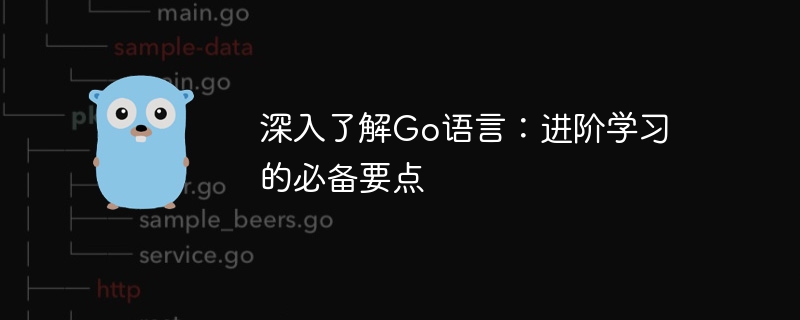Home >Backend Development >Golang >In-depth understanding of Go language: essential points for advanced learning
In-depth understanding of Go language: essential points for advanced learning
- WBOYWBOYWBOYWBOYWBOYWBOYWBOYWBOYWBOYWBOYWBOYWBOYWBOriginal
- 2024-02-27 18:36:04547browse

Go language is an open source programming language developed by Google. Its simplicity, efficiency and ease of use have attracted more and more developers. If you have mastered the basic knowledge of Go language and want to understand and apply this language more deeply, then advanced learning is particularly important. This article will start with a few essential points to give you an in-depth understanding of the advanced learning of Go language.
1. Learn and understand the concurrent programming model of Go language
As a language that supports concurrent programming, the concurrent programming model of Go language is one of its most prominent features. In the Go language, we can use goroutines and channels to implement concurrent programming, which makes the Go language perform well when handling concurrent tasks. To have a deep understanding of the concurrent programming model of the Go language, it is recommended to learn how to use goroutines and channels, understand the relationship between them, and how to effectively use them to handle concurrent tasks. At the same time, understanding the synchronous and asynchronous operations in the Go language and how to avoid common problems in concurrent programming are also very important for advanced learning.
2. Master the tools and standard libraries of Go language
In the advanced stage of learning Go language, it is crucial to master the tools and standard libraries of Go language. Go language provides a rich standard library, which contains many commonly used functions and tools, such as network programming, file operations, data structures, etc. Proficient in the use of these standard libraries can greatly improve the efficiency and quality of code. In addition, mastering Go language tools, such as go build, go run, go test and other commands, can help us compile, run and test code more conveniently.
3. Learn and apply the design patterns of the Go language
Design patterns are empirical methods used to solve common software design problems. They are useful for improving the readability, maintainability and usability of the code. Scalability plays an important role. In the advanced stage of learning Go language, it is very beneficial to understand and master the commonly used design patterns in Go language, such as singleton mode, factory mode, decorator mode, etc. By learning design patterns, we can better organize and manage the code structure, making the code clearer and easier to maintain.
4. Participation in open source projects and practical project experience
To improve the practical ability of Go language, participation in open source projects and practical project experience are essential. By participating in open source projects, we can learn from other developers’ excellent programming practices and design ideas, and expand our programming horizons. At the same time, through practical project experience, we can apply the knowledge we have learned to actual projects and improve our ability to solve problems and design solutions. Continuous trying, learning and summarizing in practice can help us better improve the practical level of Go language.
In the advanced stage of learning Go language, in addition to the above necessary points, continuous learning and continuous practice are also very important. Continuously learning new knowledge, thinking deeply and solving problems can help us better improve our Go language capabilities and levels. I hope that through the introduction of this article, you can better understand and apply the Go language and make greater progress in advanced learning.
The above is the detailed content of In-depth understanding of Go language: essential points for advanced learning. For more information, please follow other related articles on the PHP Chinese website!

